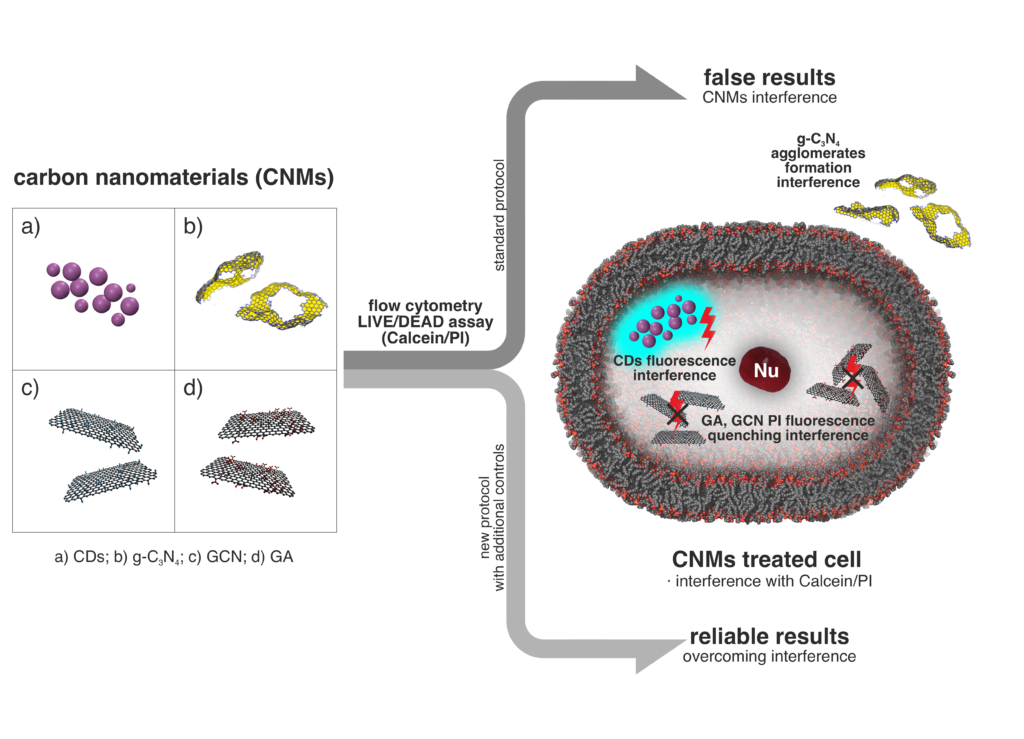Do nanomaterials harm living cells? We know how to test this reliably
Researchers from the Czech Advanced Technology and Research Institute (CATRIN) of Palacký University Olomouc in collaboration with colleagues from VSB-TUO and the Swiss research centre EMPA have developed a new procedure for testing the cytotoxicity of carbon nanomaterials—their ability to harm living cells. They offer the scientific community a solution that overcomes the weaknesses of current strategies and is therefore significantly more reliable.
“Carbon nanomaterials are increasingly used not only in industry, but also in biomedicine or environmental applications; therefore, testing of their potential toxicity is extremely important. Although it is a well-known fact that routine toxicity tests to date have their limits and are not always conclusive, it’s, unfortunately, still neglected in most works,” said one of the authors, Kateřina Poláková.
The team in Olomouc has been long devoted to the study of interactions between carbon-based nanomaterials and living cells or organisms. Now, in collaboration with Swiss colleagues, they studied the cytotoxicity of four very promising carbon nanomaterials—carbon dots, graphitic carbon nitride, graphene acid and cyanographene.

“We found that interactions between carbon nanomaterials and chemicals that are part of standard toxicology test procedures can negatively affect the test results. Indeed, the values obtained for the cell viability did not reflect the interaction of the nanomaterials with the cells but the effect of those materials on the fluorescence properties of the dyes of the relevant tests. Therefore, in the protocol for the flow cytometry method, we used more control samples to help us detect these negative effects. Based on additional controls, we have created a new approach for evaluating this method that overcomes the interaction with fluorescent dyes and allows reliable in vitro testing of carbon nanomaterials toxicity,” explained the first author of the study, Tomáš Malina.
The work is a significant contribution to the field of nanotoxicology. It is a ground-breaking field of research since nanomaterials cannot be studied as common chemical compounds primarily because of their complex behaviour. This is manifested by the multi-level interaction between nanomaterials and living cells.
“Any research aimed at the interaction of nanomaterials with living cells or biological systems is generally extremely important and has a strong impact on the future real-world applications of nanomaterials. Carbon nanomaterials, whose applications are growing enormously in a number of areas, including biomedicine, should be reliably tested. We want to offer our newly developed strategy to the entire community of carbon research,” added Poláková. The work builds on years of research by a team from CATRIN-RCPTM into the interaction of biological systems with carbon nanomaterials of various dimensions, such as carbon dots, graphene derivatives or its nanosilver composites. The expansion of the scientific cooperation opens up further possibilities for assessing the safety of nanomaterials used in practice.
Reference:
T. Malina, K. Polakova, C. Hirsch, L. Svoboda, R. Zboril, Toxicity of Carbon Nanomaterials—Towards Reliable Viability Assessment via New Approach in Flow Cytometry. International Journal of Molecular Sciences 22 (2021), 7750.


